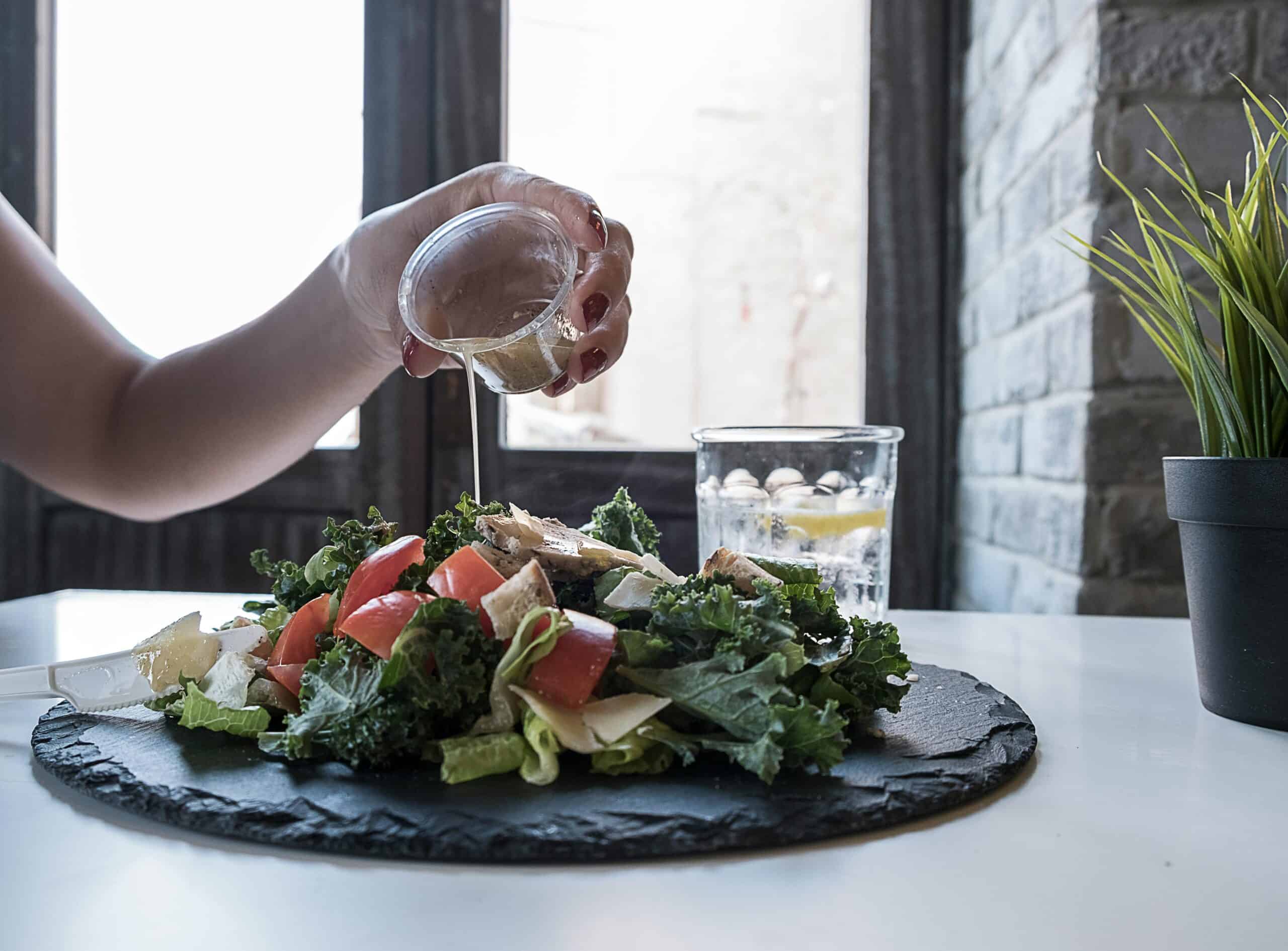Slathered on a sandwich, smashed between two burger patties, or drizzled on hot dogs—we sure do love our sauce. One statistic made my stomach churn: The average American eats 71 pounds of ketchup each year.
Condiments are the secret sauce behind our obesity epidemic. They’re not only full of empty calories, many are made with ingredients never meant for humans to ingest.
Below, I share the scary truth about the condiments in your fridge and share some smart swaps you should make today.
Your Salad Dressing Should Scare You
Did you know that the federal government allows oil—the same oil that runs your car and lubricates machinery—to be added to food?
Many of the fats and oils that go into packaged food are bad for you. They’re processed with a petroleum-based solvent, which causes irritation, inflammation, disease, and heart health issues.
What we now call “vegetable oil” was once called “industrial seed oil” and was classified as “toxic waste.” In the U.S., we consume over 7.5 billion barrels of petroleum products a year. Gag!
These highly processed oils are full of inflammatory properties and have been associated again and again with the growth of cancer cells, higher blood pressure, increased obesity, heart attack, stroke, and depression, water retention, and even violent tendencies.
Finding your way to healthy products on the grocery shelves is hard. To put it plainly, you’ve been lied to. Bottles are plastered with farce “healthy heart” claims. Low-fat options are full of unhealthy ingredients, but you’ve been told that’s the way to shed pounds and boost your health.
The 9 No-Brainer Condiment Swaps You Need
Ready to clean up your condiments? When picking between brands and ingredients, try to avoid these seven condiment culprits: vegetable oil, corn oil, soybean oil, cotton oil, sunflower oil, peanut oil, and canola oil. Instead, look for ones that are made with healthy oils, like avocado oil, coconut oil, grass-fed butter, ghee, and olive oil.
Swap out the following nine sauces with my tried-and-true healthier versions:
1.Reach for This Ranch
Don’t be fooled by the rolling farm fields on the bottle. Hidden Valley Ranch is a far cry from farm-to-table. Vegetable oil (the one we warned you about above) is the first ingredient on the list, meaning it’s the largest ingredient in the bottle.
A good grocery-store swap is Bolthouse Farms Classic Ranch (their first ingredient is buttermilk). Or, if you want to steer clear of vegetable oil altogether, try Primal Kitchen’s Ranch Dressing.
2. Vastly Better Vinaigrette
Water, sugar, vinegar, then vegetable oil. That’s the ingredient list, in order, that you’ll see on many store bought vinaigrette dressings.
If you’ve got to have that Raspberry Vinaigrette flavor you’ve known for years, this light version has slightly less calories, sugar, and seed oil. For a clean vinaigrette, blend up this recipe in two minutes!
3. A Fitter Alfredo
Creamy, dreamy Alfredo sauce, drenching a bowl of white pasta—the only thing that sounds more indulgent is all that plus wine.
Alfredo sauce is typically packed with calories. The serving size suggestion of ¼ cup is laughable! We all know we’re eating at least double that, and at 150 calories a serving, that’s a high-calorie condiment.
Sometimes switching to a different brand makes all the difference. While Bertolli’s Alfredo sauce is higher in calories, Classico’s only contains 50 calories per ¼ cup.
4. Switch Out Your Chick-fil-A Sauce
I’m addicted to Chick-fil-A sauce! Of course, like the other sauces on the list, Chick-fil-A sauce is a high-calorie hodge-podge of unhealthy ingredients.
If you’re on the go and grab lunch at Chick-fil-A, opt for their Zesty Buffalo sauce instead. At ⅕ of the calories, it makes fast food hit a little lighter. Or you can whip together this cleaner version at home.
5. Healthier Honey Mustard
Honey mustard sounds like a simple, two-ingredient sauce. But the ingredient list is surprisingly long. Plus, most honey mustards, like Ken’s, are made with seed oils and sweetened with sugar instead of honey.
G Hughes’ honey mustard is cleaner, lighter, and sugar-free, but packed with flavor. Grab it on your next grocery run.
6. Move Over, Mayo
The U.S. consumes some $2 billion worth of mayonnaise each year. But surprise, surprise! One look at the ingredient list shows that we’re actually eating cup after cup of seed oil. Plus, a tablespoon of mayo has about the same number of calories as a can of tuna!
Greek yogurt is an amazing replacement for mayonnaise. It’s packed with protein, calcium, and B vitamins. Plus, it increases gut health and leads to more weight loss. This is my favorite brand of Greek yogurt for healthier dipping sauces and even baking.
7. Try This Teriyaki Sauce
There’s a reason why teriyaki sauce is so tasty. It’s packed with 7 grams of sugar per tablespoon. Know your brands in the grocery store, and you can significantly lower your sugar intake without sacrificing flavor.
Kikkoman’s Teriyaki Sauce has a quarter of the sugar per serving than most other brands. Looking for a good recipe? This homemade teriyaki sauce is keto and sweetened with monk fruit.
8. Better-For-You BBQ Sauce
As soon as summer hits, our family starts grilling. It’s a tradition that needs BBQ sauce to stay alive. I can’t skip this sauce, so I swap the high-sugar, high-calorie, artificial stuff with this clean brand. With just 7 calories per tablespoon, and organic, whole-food ingredients, I can indulge in the sauciest grilled chicken every sunny weekend.
9. Pick This Pasta Sauce
We’ve become more aware of how much sugar sneaks into our food. Pasta sauce is a classic example—shockingly, most marinara sauces sneak in over 20 grams of sugar per cup!
Next spaghetti night, grab Delallo’s Fat-Free Marinara. It’s made with tomatoes and spices, includes 0 grams of added sugar, contains half the calories, and tastes like the real deal.
The Common Sense Solution to Weight Loss
When selecting condiments, look for real, whole-food ingredients.
Weight loss is hard, but intentional swaps can make the journey much easier. Eat the right amount of the right food. When you find out exactly how much food your body needs and fill your plates with healing whole food, you’ll start to see the scale move.
Download my free Macros and Calorie Guide For Weight Loss guide to get an easy breakdown of what macros and how much of each you should see on your plate for weight loss.





